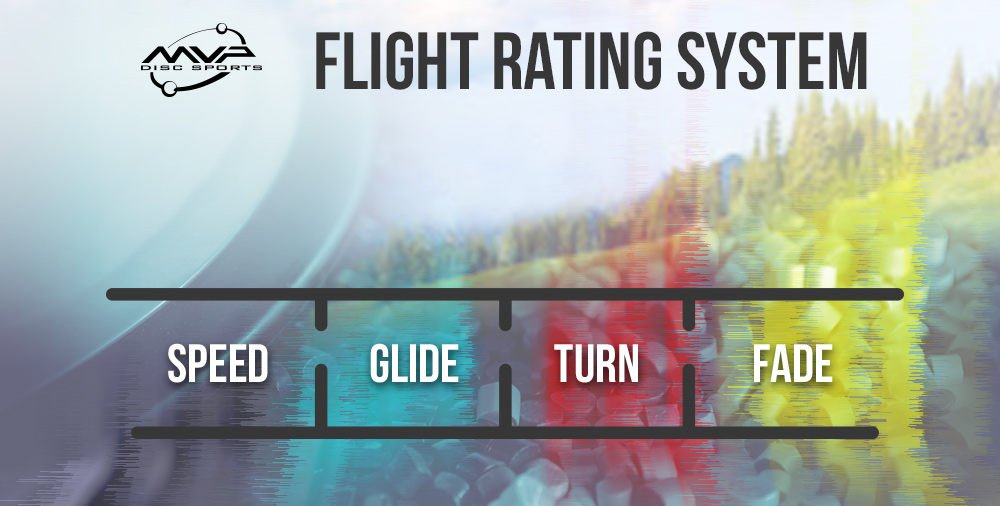
What are the 4 numbers of a flight rating?
The 4 number flight rating system can be broken down into 4 categories: Speed, Glide, Turn, and Fade.
Each of these characteristics help to express the overall flight of a disc and can serve as a guide to what you can expect out of a disc before throwing it.
All of our ratings are based on the idea that the player is throwing right-hand backhand (RHBH). Our flight charts (found here), can also be incredibly helpful and include information for forehand, and left-handed players.
.5 Increments?
There are a lot of instances where a whole number just does not accurately describe a flight characteristic, and we have a number of discs that just don’t fit a whole number rating. We strive for accuracy and consistency with our products, and because of this we have chosen to include the potential for a .5 variance, as we believe it gets us closer to the actual characteristics of a disc.
Speed (1 to 15)
Speed is an indicator of the amount of initial velocity necessary to achieve optimal flight of the disc. A speed 10 disc, by its design, is intended to fly further than a speed 5 disc. However, the skill necessary to achieve the optimal flight of a speed 13 disc is greater than that of a speed 5 disc.
Speed is not a measurement of how far an individual player will throw. Lower speed discs require less power to achieve their optimal flight, and in a lot of cases, a lower speed disc will fly farther and more accurately than a high-speed disc when thrown by an intermediate player.
Glide (1 to 6)
Glide is the measure of how well a disc retains loft in relation to the amount of power of the throw. Low-speed discs with a higher glide rating are easier for new players to achieve longer flights. A disc with a lower glide rating will be more resistant to wind, and players will be able to achieve more consistent lines in windy conditions.
Turn (0 to -5)
Turn is an early characteristic of disc flight, represented with our numbers 0 to -5, that occurs as a result of the aerodynamic forces exceeding the gyroscopic forces of the disc. As a result of Bernoulli’s Principle exerting more lift on the upper left surface of the disc (for a right-hand backhand throw), the disc will drift towards the right during this phase of flight. GYRO® discs will always have a more predictable and controllable turn phase of flight because of the enhanced gyroscopic effect. A turn of 0 will fight wind and resist turning over the most. While a disc with a turn of -5 will turn over the most and are useful for large sky anhyzer shots or quick turnover rollers.
Fade (0 to 5)
Fade is a characteristic of flight that occurs during the later phases of disc flight, represented with our numbers 0 to 5. Fade occurs when a disc begins to drop and forces of air on the bottom wing of the disc begin to exceed the lift forces keeping the disc in flight. As a result of Bernoulli’s Principle exerting more lift on the bottom left wing of the disc (for a right-hand backhand thrower), the disc will fade towards the left during this later phase of flight. GYRO® discs will always have a more controlled forward penetrating fade because of the enhanced gyroscopic effect. A disc with a fade of 0 will finish the straightest and see the least amount of left movement towards the end of their flight. While a disc with a fade of 5 will see a hard hook to the left at the end.





